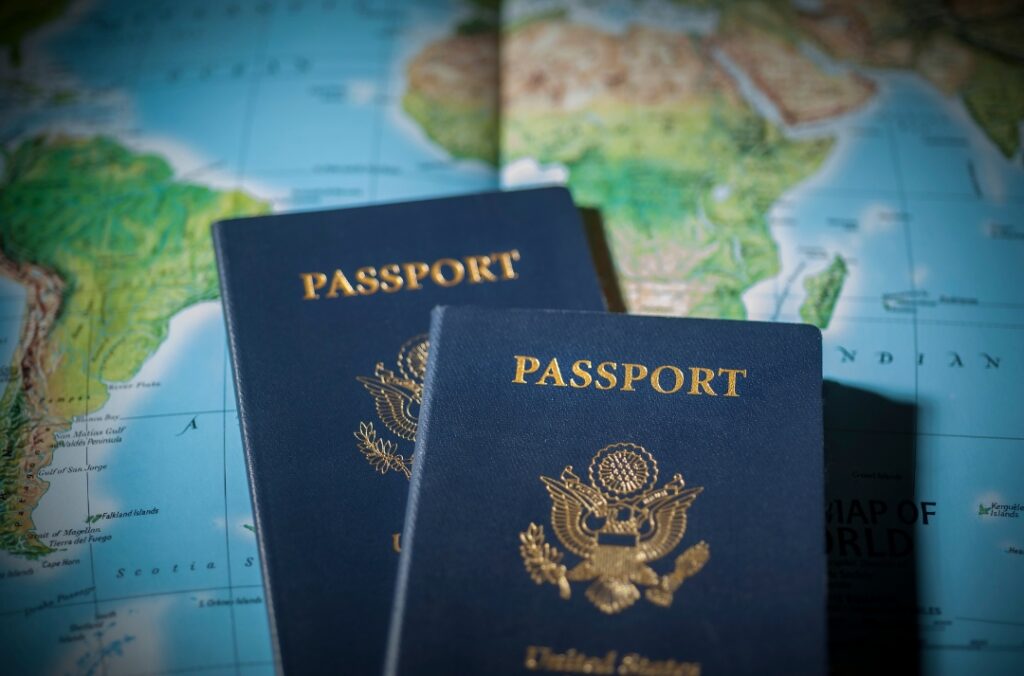Menu
Menu
Traveling can be an exciting adventure, but it often involves extended periods of sitting or standing, leaving you feeling stiff and uncomfortable. Whether you’re on a plane, train, or road trip, it’s essential to prioritize your physical well-being. Incorporating simple stretches into your travel routine can help you stay loose, maintain flexibility, and alleviate muscle tension. In this blog, we’ll delve into staying loose while traveling and discover five essential stretches to help you maintain flexibility and alleviate muscle tension during your journey.

The shoulders and neck are among the most common areas to experience discomfort while traveling. To relieve tension, try performing neck rolls by rolling your head slowly from side to side, then from front to back. Shoulder shrugs are another effective exercise to release built-up tension. Lift your shoulders toward your ears, hold for a few seconds, and then relax them. Additionally, you can perform stretches by tilting your head from side to side or rolling your shoulders in circular motions. These simple exercises can make a significant difference in relieving discomfort and stiffness.
Sitting for prolonged periods can cause the spine to become stiff and inflexible. A seated spinal twist is an excellent stretch to counteract this.
This stretch helps improve spinal mobility and releases lower back and hip tension. If you find it challenging to twist while seated, you can modify the stretch by using the armrest or the back of the seat as support.
 Sitting for long durations can also cause tightness in the hip flexor muscles. To stretch your hips flexors:
Sitting for long durations can also cause tightness in the hip flexor muscles. To stretch your hips flexors:
This stretch helps maintain flexibility in the hips and prevents lower back pain. If standing is not an option, you can perform a seated hip flexor stretch by sliding forward to the edge of your seat, extending one leg out in front, and then gently leaning forward.
A standing forward bend can work wonders to counteract the tightness that often builds up in the hamstrings and lower back during travel.
 Tight calf muscles are a common complaint during travel, especially if you’ve been sitting for long periods or doing a lot of walking. To stretch your calves:
Tight calf muscles are a common complaint during travel, especially if you’ve been sitting for long periods or doing a lot of walking. To stretch your calves:
Performing calf stretches can help prevent cramps and promote healthy blood circulation.
In addition to these stretches, there are other steps you can take for a more comfortable travel experience. Here are a few additional tips:
By incorporating these stretches and following these additional tips, you can keep your body loose, mobile, and comfortable while traveling. Remember, taking care of your physical well-being during your journey will enhance your travel experience and make it easier to transition into your destination activities.
Traveling doesn’t have to leave you feeling stiff and uncomfortable. Incorporating these five stretches into your travel routine can help maintain your flexibility, alleviate muscle tension, and enhance your overall comfort during your journey.
Remember, it’s crucial to listen to your body and only perform stretches that feel comfortable to you. Consult a healthcare professional before attempting these stretches if you have any existing medical conditions or injuries. Additionally, ensure you have enough space and a stable environment to perform the stretches safely. Safe travels, and happy stretching!